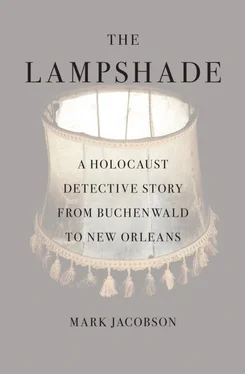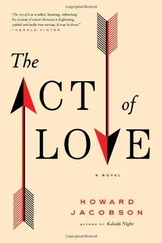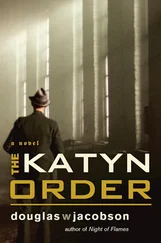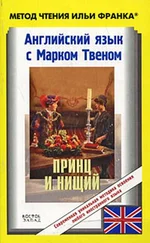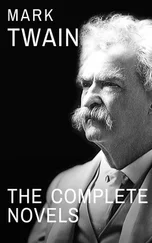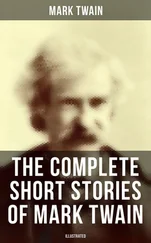Gonen, Jay Y. The Roots of Nazi Psychology: Hitler’s Utopian Barbarism . Lexington: The University Press of Kentucky, 2000.
Green, Lawrence, and Frederick Morton. Lost Souls in the Cities of the Dead . New Orleans: Divine Intervention Productions LLC, 2001.
Greene, Joshua M. Justice at Dachau: The Trials of an American Prosecutor . New York: Broadway Books, 2003.
Hackett, David A., ed. and trans. The Buchenwald Report . Boulder, Colo.: Westview Press, 1995.
Hair, William Ivy. Carnival of Fury: Robert Charles and the New Orleans Race Riot of 1900 . Baton Rouge: Louisiana State University Press, 1976.
Halbwachs, Maurice. On Collective Memory . Translated by Lewis A. Coser. Chicago: University of Chicago Press, 1941.
Hale, Christopher. Himmler’s Crusade: The Nazi Expedition to Find the Origins of the Aryan Race . Edison, N.J.: Castle Books, 2008.
Hall, Gwendolyn Midlo. Africans in Colonial Louisiana: The Development of Afro-Creole Culture in the Eighteenth Century . Baton Rouge: Louisiana State University Press, 1992.
Halow, Joseph. Innocent at Dachau . Newport Beach, Calif.: Institute for Historical Review, 1992.
Hamburg Institute for Social Research, ed. The German Army and Genocide: Crimes Against War Prisoners, Jews, and Other Civilians, 1939—1944 . New York: The New Press, 1999.
Hammett, Dashiell. The Maltese Falcon . New York: Vintage, 1929.
Hartman, Chester, and Gregory D. Squires, eds. There Is No Such Thing as a Natural Disaster: Race, Class, and Hurricane Katrina . New York: Routledge, 2006.
Hauswald, Harald, and Lutz Rathenow. Ost-Berlin: Life Before the Wall Fell . Berlin: Jaron Verlag, 2005.
Hernon, Peter. A Terrible Thunder: The Story of the New Orleans Sniper . New Orleans: Garrett County Press, 2001.
Hoover, Herbert T. The Chitimacha People . Phoenix: Indian Tribal Series, 1975.
Hotard, Corey David. “Bombarding the City of the Dead: Who Has a Right to the Past?” Master’s thesis, Department of Geography and Anthropology, Louisiana State University, 1999.
Institute of Women & Ethnic Studies. Stories of Survival (and Beyond): Collective Healing after Hurricane Katrina. New Orleans, 2007.
International Tracing Service, Annual Report 2007. Bad Arolsen, Germany.
Jablonski, Nina G. Skin: A Natural History . Berkeley: University of California Press, 2006.
Jung, C. G. Jung on Evil . Edited by Murray Stein. Princeton, N.J.: Princeton University Press, 1996.
Kahn, Catherine C., and Irwin Lachoff. The Jewish Community of New Orleans . Charleston, S.C.: Arcadia Publishing, 2005.
Kershaw, Ian. The ‘Hitler Myth’: Image and Reality in the Third Reich. Oxford: Oxford University Press, 1987.
Kertész, Imre. Fatelessness: A Novel. Translated by Tim Wilkinson. New York: Random House, 2004.
Kiernan, Ben. Blood and Soil: A World History of Genocide and Extermination from Sparta to Darfur . New Haven, Conn.: Yale University Press, 2007.
———. The Pol Pot Regime: Race, Power, and Genocide in Cambodia under the Khmer Rouge, 1975—79 . New Haven, Conn.: Yale University Press, 2002.
Kleiman, Rabbi Yaakov. DNA and Tradition: The Genetic Link to the Ancient Hebrews . Jerusalem: Devora Publishing Company, 2004.
Kogon, Eugen. The Theory and Practice of Hell . New York: Farrar, Straus & Co., 1950.
Lerner, Daniel. Psychological Warfare Against Nazi Germany: The Sykewar Campaign, D-Day to VE-Day . Cambridge, Mass.: MIT Press, 1971.
Levenda, Peter. Unholy Alliance: The History of Nazi Involvement with the Occult . New York: Continuum, 1995.
Liebling, A. J. The Earl of Louisiana . Baton Rouge: Louisiana State University Press, 1961.
Linenthal, Edward T. Preserving Memory: The Struggle to Create America’s Holocaust Museum . New York: Columbia University Press, 1995.
Lowenthal, David. “Authenticities Past and Present.” CRM: The Journal of Heritage Stewardship 5, no. 1 (Winter 2008).
Lupton, Ellen. Skin: Surface, Substance, and Design . New York: Princeton Architectural Press, 2002.
Neumann, Klaus. Shifting Memories: The Nazi Past in the New Germany . Ann Arbor: The University of Michigan Press, 2000.
Niven, Bill. The Buchenwald Child: Truth, Fiction, and Propaganda . Rochester, N.Y.: Camden House, 2007.
Office of the Federal Register. 43 CFR 10 Subpart B: “Human Remains, Funerary Objects, Sacred Objects, or Objects of Cultural Patrimony from Federal or Tribal Lands.”
Pringle, Heather. The Master Plan: Himmler’s Scholars and the Holocaust . New York: Hyperion, 2006.
Przyrembel, Alexandra. “Transfixed by an Image: Ilse Koch, the ‘Kommandeuse of Buchenwald.’” German History 19, no. 3 (2001): 369—99.
Ribowsky, Shiya. Dead Center: Behind the Scenes at the World’s Largest Medical Examiner’s Office . With Tom Shachtman. New York: Regan, 2006.
Ricoeur, Paul. The Symbolism of Evil . Boston: Beacon Press, 1967.
Robinson, Plater. A House Divided: A Teaching Guide on the History of Civil Rights in Louisiana . New Orleans: Southern Institute for Education and Research, 1995.
Rosenbaum, Ron. Explaining Hitler: The Search for the Origins of His Evil . New York: Random House, 1998.
———, ed. Those Who Forget the Past: The Question of Anti-Semitism . New York: Random House, 2004.
Saunders, Frances Stonor. The Cultural Cold War: The CIA and the World of Arts and Letters . New York: The New Press, 2000.
Schechter, Harold. Deviant: The Shocking True Story of Ed Gein, the Original “Psycho.” New York: Pocket Books, 1989.
Semprún, Jorge. Literature or Life . London: Penguin Books, 1994.
———. The Long Voyage: A Novel . Woodstock, N.Y.: Overlook Press, 1963.
Shadows of Silence . Documentary film on Ken Kipperman. Written and directed by Martina Dase. Dokfilm, 2004.
Shalev-Gerz, Esther. The Human Aspect of Objects . Weimar: Stiftung Gedenkstätte Buchenwald und Mittelbau-Dora, 2004—6.
Shermer, Michael, and Alex Grobman. Denying History: Who Says the Holocaust Never Happened and Why Do They Say It?. Berkeley: University of California Press, 2002.
Simons, Andrew, and the Greater New Orleans Archivists. The Jews of New Orleans: An Archival Guide . New Orleans: The Greater New Orleans Archivists, 1998.
Smith, Alfred L. Die Hexe of Buchenwald . Böhlau, Köln, 1983.
Somers, Dale A. “Black and White in New Orleans: A Study in Urban Race Relations, 1865—1900.” Journal of Southern History 40 (February 1974): 19—42.
South End Press Collective, ed. What Lies Beneath: Katrina, Race, and the State of the Nation . Cambridge, Mass.: South End Press, 2007.
Stein, Harry, and Sabine Stein. Buchenwald: A Tour of the Memorial Site . Buchenwald Memorial, 1993.
Sublette, Ned. The World That Made New Orleans: From Spanish Silver to Congo Square . Chicago: Lawrence Hill Books, 2008.
Tallant, Robert. Voodoo in New Orleans . Gretna, La.: Pelican Publishing Company, 2003.
Thompson, William Irwin. Evil and the World Order . New York: Harper and Row, 1976.
Tulkoff, Alec S. Counterfeiting the Holocaust: A Historical and Archival Examination of Holocaust Artifacts . Edited by Larry Urish. Atglen, Pa.: Schiffer Military History, 2000.
Vonnegut, Kurt. Slaughterhouse-Five . New York: Dell, 1969.
Watson, James D. The Double Helix . New York: Touchstone, 1968.
Читать дальше
